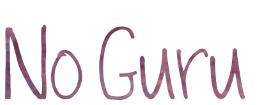Get the most bang for your buck in the closet
When you’re building your functional wardrobe (see our last blog post to find out what we mean by functional), there’s always a consideration of what you value most. No matter if your budget is large or small, there’s a universal desire to get value out of what you purchase. There are several ways to determine value and straight economics is just one. Here are three ways to measure the value you’re getting from your closet:
1. Dollars and Cents: This way of measuring value looks strictly at the way you spend your cash. A good guideline to follow for clothing purchases throughout the year is 5-10% of your net income and this includes socks and underwear. If your lifestyle is more casual, then your expenses will be closer to 5%. If your lifestyle is more formal, then you’d likely be spending closer to 10%. You can also look at cost per wear - take the cost of the item and divide it by the number of times you expect to wear it. This is where fast fashion often loses out – a $10 shirt you can only wear twice ends up being more expensive in the long run at $5 per wear than a $50 top you can wear 50 times at $1 per wear.
2. Emotional/Physical: If you have a strong feeling about what you wear, then the value of your wardrobe might be more emotional than economical. In this way, you’ll be shopping more for things that make you feel great, things that will suit your mood when you get dressed in the morning and feel great on your body. You might buy clothing that makes you feel confident, powerful, alluring or fabulous. You might like shopping for trend or for fun. Therefore, the strict dollar value of something won’t matter as much to you as how you feel in the clothes you buy. In a later blog post we’ll also be looking at ‘age appropriate’, a term we define a bit differently than most.
3. Versatility: Things you can wear more than one way or with more than one outfit give more value over time. That top that looks great only with one pair of pants isn’t going to give you as much value as the top that looks great with two or more bottoms. There are a couple of different wardrobe formulas that our staff is learning to help you build these kinds of combinations effectively, according to what suits your colouring, body type, personal style and lifestyle. (more info). Also, we look at ways to combine those pieces with accessories that can level up the formality, dress an outfit down, increase polish or express your personality, whichever you prefer.
Whatever measure you use for valuing your wardrobe, we want to make sure that what you’re buying will give you good value. Wondering how this will work for you? Come and see us!


